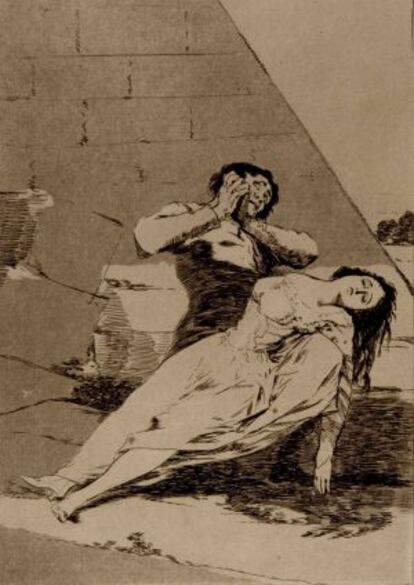Heritage sale ban slapped on Goyas
But value of prints little use to cash-starved Ateneo after subsidy cutbacks

The sale went ahead on February 21 - minus the Goya prints - with 14 works raising 140,000 euros. The starting prices for works that, as well as celebrated hyperrealist Antonio López, included pieces by Eusebio Sempere, Josep Guinovart and José Moreno Villa, were around half the amount raised.
The regional government of Madrid's heritage council had prevented the Ateneo from selling its Goya prints, arguing that they were an essential part of the capital's cultural patrimony. The Goya works form part of the Ateneo's library, which in 1995 was declared part of Madrid's cultural heritage, meaning that no part of it could be sold.
Carlos París, the president of the Ateneo cultural institution, had argued that as the Goya prints were only discovered in 2005, they were not officially listed as part of the library inventory.
Two successive governments have cut arts spending to meet EU targets
París said that he was "devastated" by the Madrid regional government's decision, explaining that the club continues to face severe financial problems despite the sale.
Two successive governments have reduced arts spending to meet targets for aid from the European Union, cutbacks which have hit the sector hard: a high proportion of all cultural budgets in Spain - often upward of 50 percent - comes from government subsidies. A report produced for the Culture Ministry and updated at the end of 2012 found that since 2009 the average cultural organization had reduced its budget or volume of activity by 49.8 percent.
All in all, the situation for the arts in Spain is dire, affecting both famous, mainstream and small-scale local institutions alike.
The crisis will eventually polarize the cultural scene, leaving just the rich
The Gran Teatre del Liceu in Barcelona, one of the country's two leading opera houses, has laid off about 100 employees since the crisis began. At the Palau de les Arts Reina Sofía in Valencia the budget and performance schedule have both been cut in half, and its soaring, retro-futurist Santiago Calatrava building, which opened in 2005, therefore sits dormant most of the year.
Neither the biggest cities nor the most important institutions have been spared the knife. Cuts forced even the Prado museum in Madrid to cancel a planned Lucian Freud retrospective. Also in the capital, the Teatro Real opera house has faced cuts of a third of its budget, forcing, among other adjustments, the cancelation of a much-anticipated three-year series of opera productions in collaboration with the Berlin Philharmonic.
But it is organizations like the Ateneo - large enough to accrue genuine expenses but small enough to have seen their relatively minor subsidies vanish almost totally - may end up becoming the lasting victims of a financial crisis that will eventually polarize the cultural scene, leaving just the biggest institutions - the Prados and Teatro Reals.
In the meantime, the Carlos París wonders whether the Ateneo in Madrid will be able to celebrate its 200th anniversary in 2035.
Tu suscripción se está usando en otro dispositivo
¿Quieres añadir otro usuario a tu suscripción?
Si continúas leyendo en este dispositivo, no se podrá leer en el otro.
FlechaTu suscripción se está usando en otro dispositivo y solo puedes acceder a EL PAÍS desde un dispositivo a la vez.
Si quieres compartir tu cuenta, cambia tu suscripción a la modalidad Premium, así podrás añadir otro usuario. Cada uno accederá con su propia cuenta de email, lo que os permitirá personalizar vuestra experiencia en EL PAÍS.
¿Tienes una suscripción de empresa? Accede aquí para contratar más cuentas.
En el caso de no saber quién está usando tu cuenta, te recomendamos cambiar tu contraseña aquí.
Si decides continuar compartiendo tu cuenta, este mensaje se mostrará en tu dispositivo y en el de la otra persona que está usando tu cuenta de forma indefinida, afectando a tu experiencia de lectura. Puedes consultar aquí los términos y condiciones de la suscripción digital.
Últimas noticias
Most viewed
- Why we lost the habit of sleeping in two segments and how that changed our sense of time
- Trump’s obsession with putting his name on everything is unprecedented in the United States
- Pablo Escobar’s hippos: A serious environmental problem, 40 years on
- The Florida Keys tourist paradise is besieged by immigration agents: ‘We’ve never seen anything like this’
- Charles Dubouloz, mountaineering star, retires at 36 with a farewell tour inspired by Walter Bonatti








































